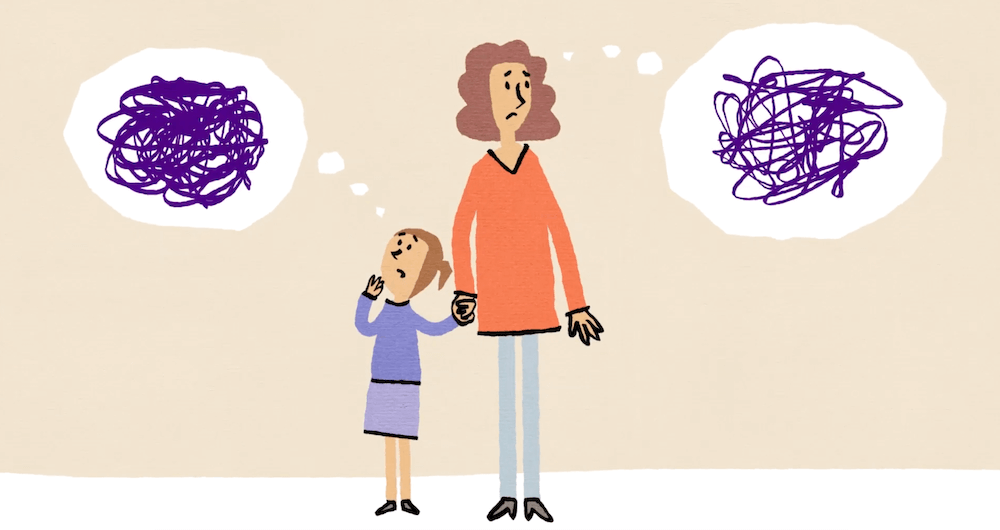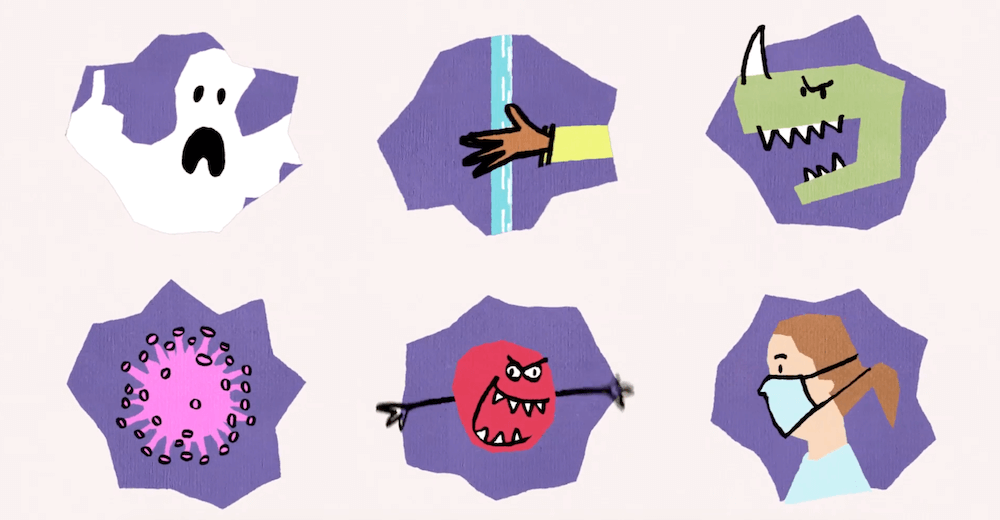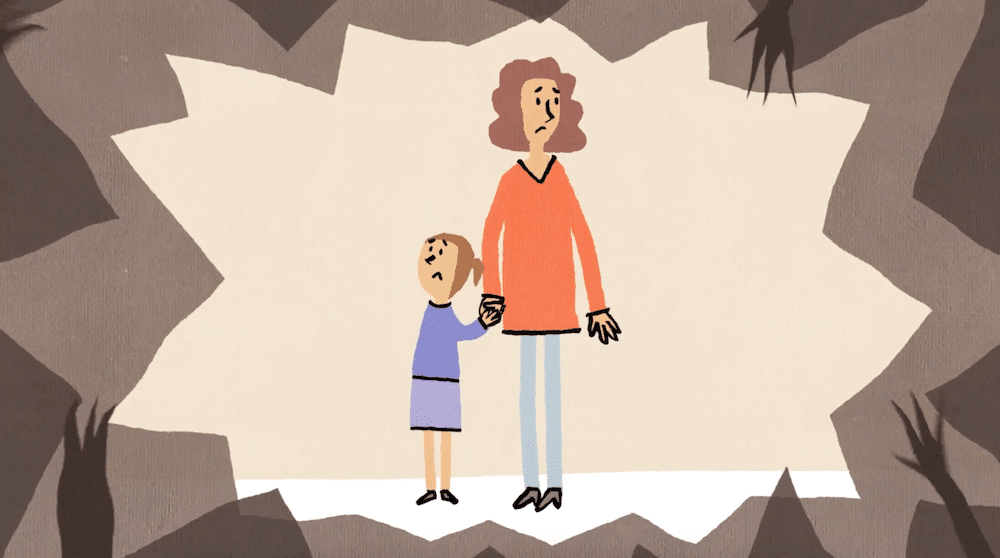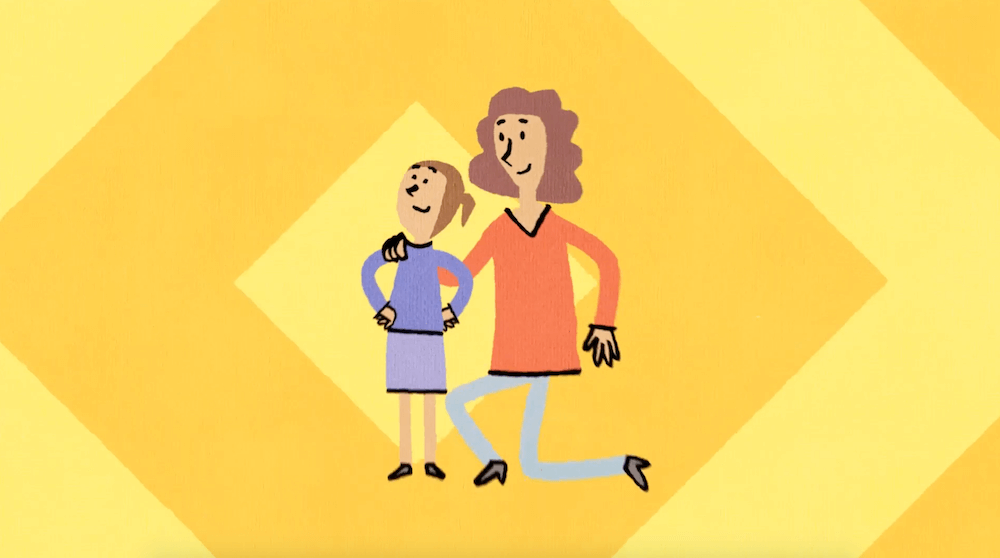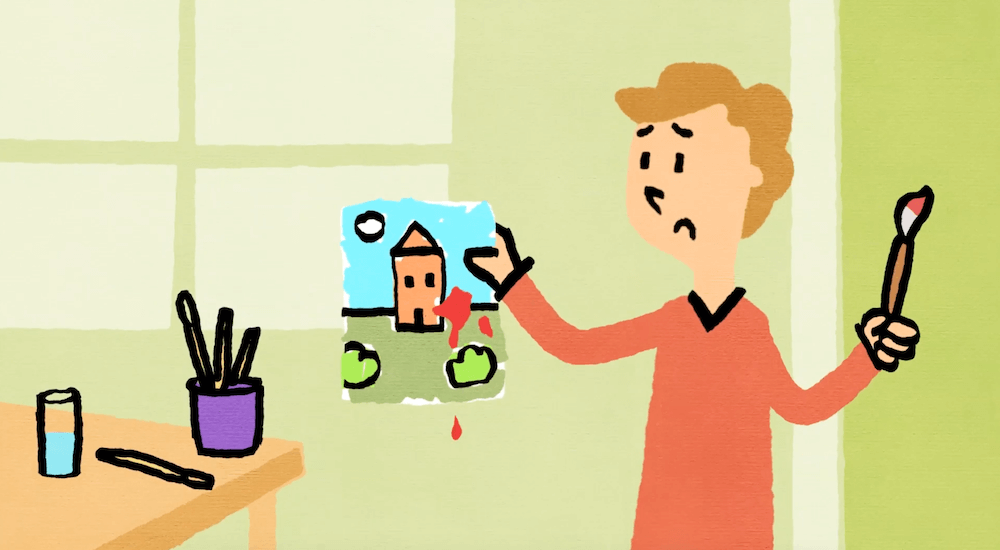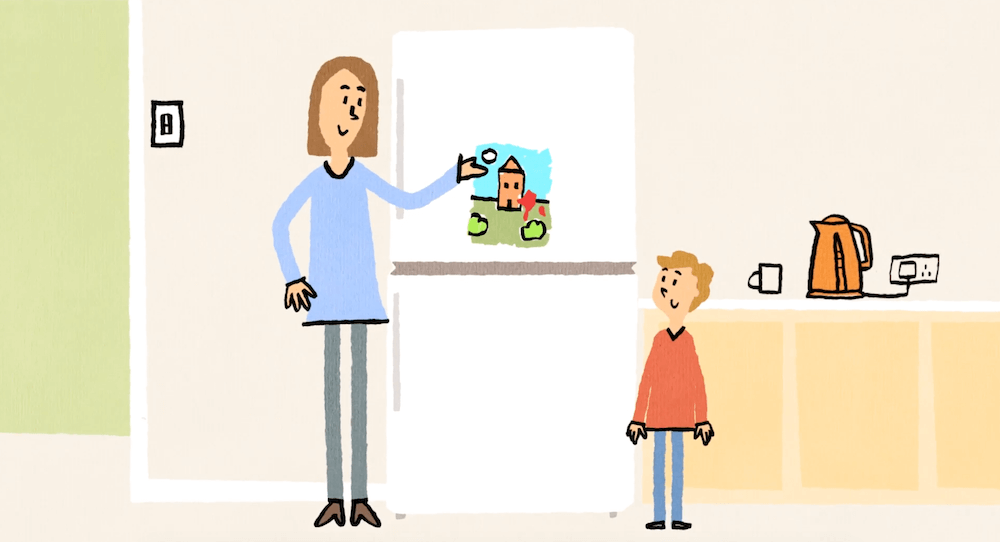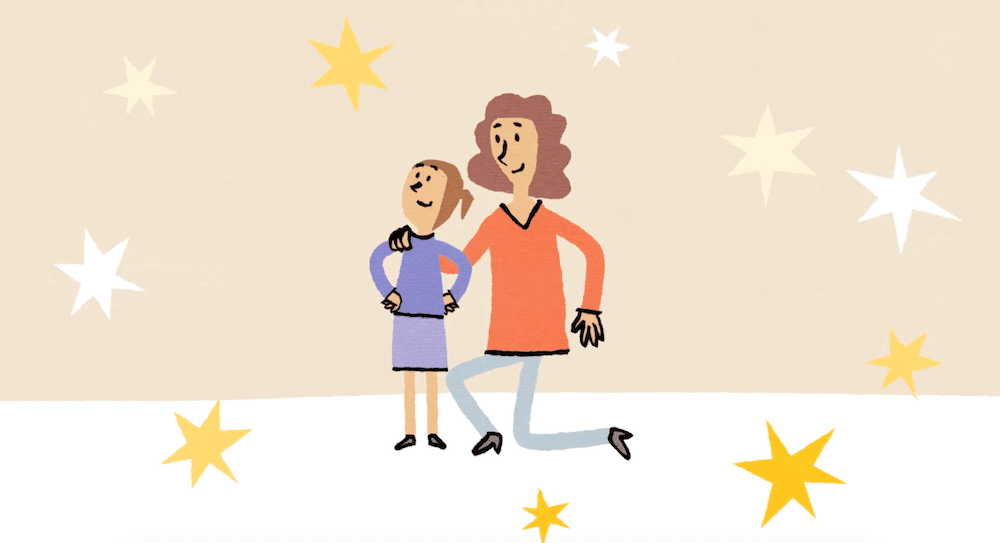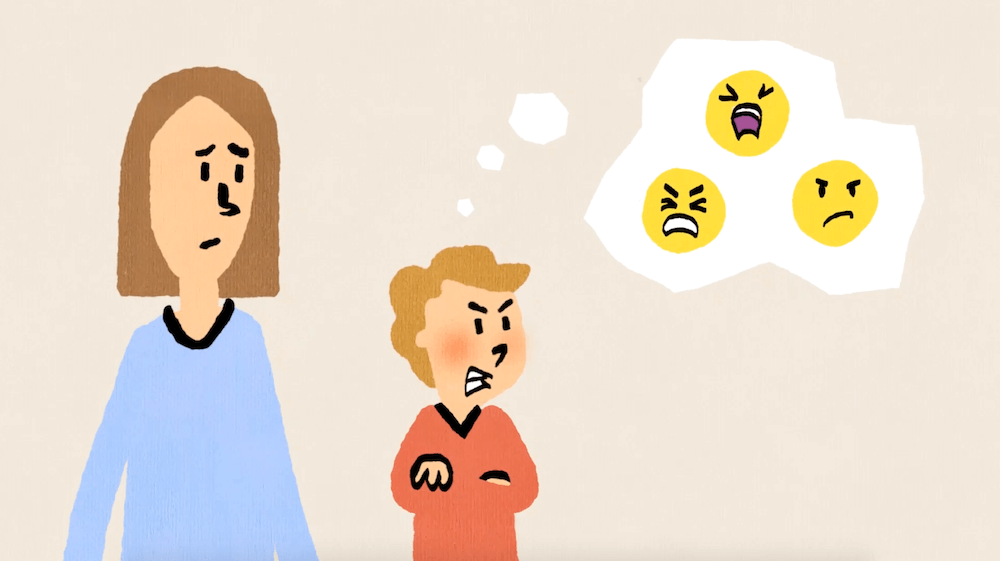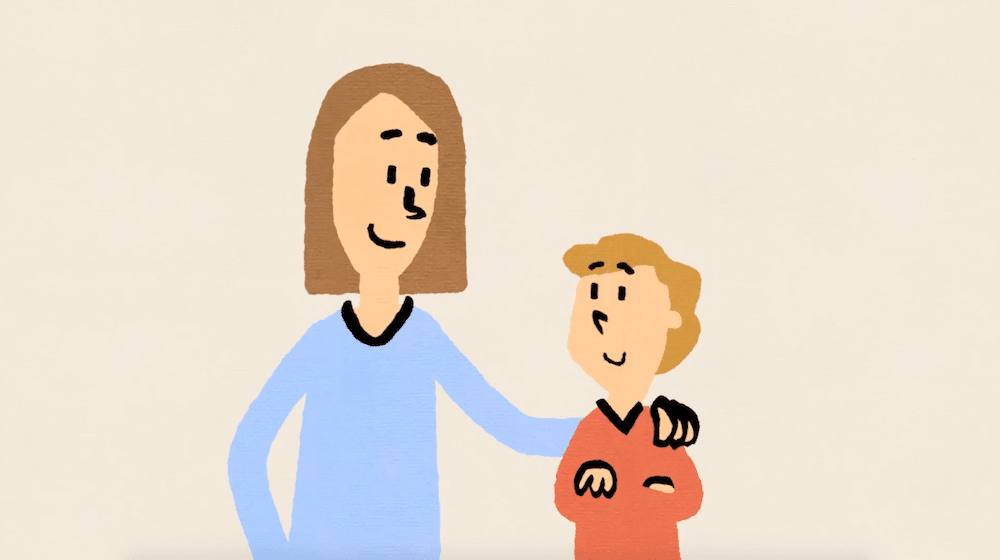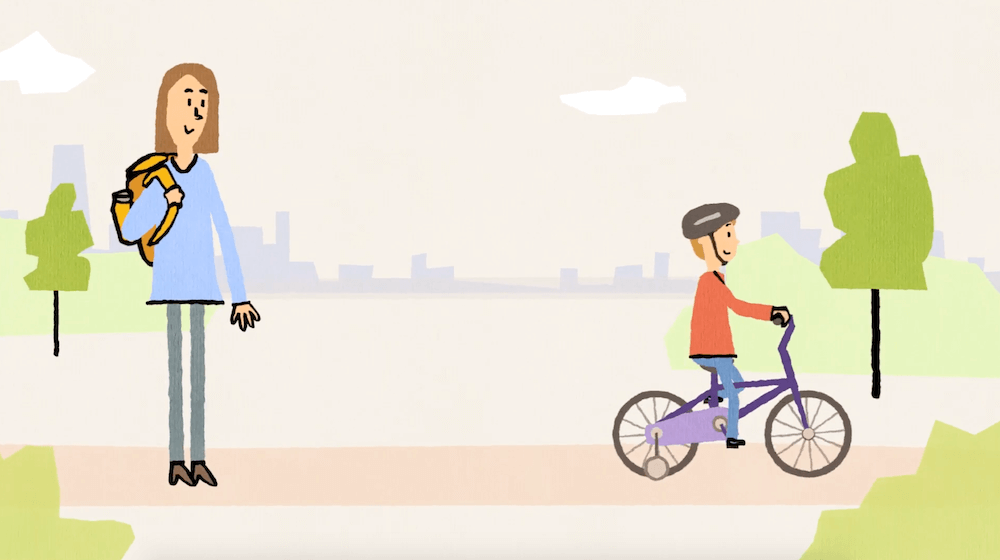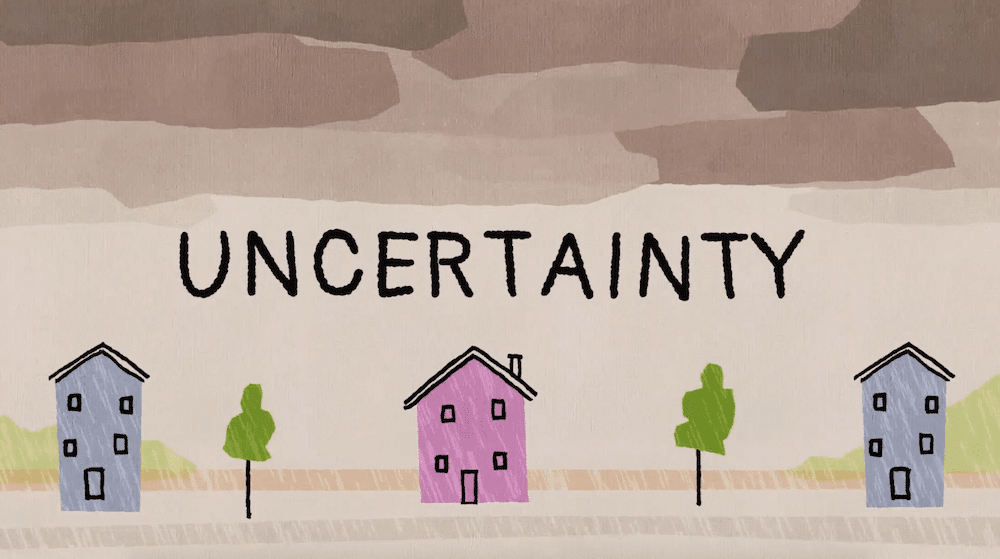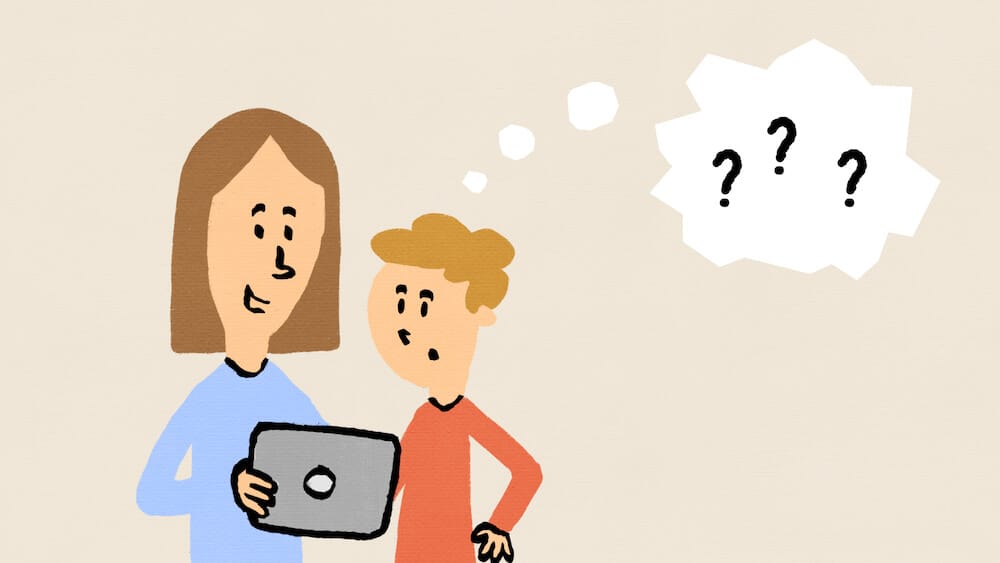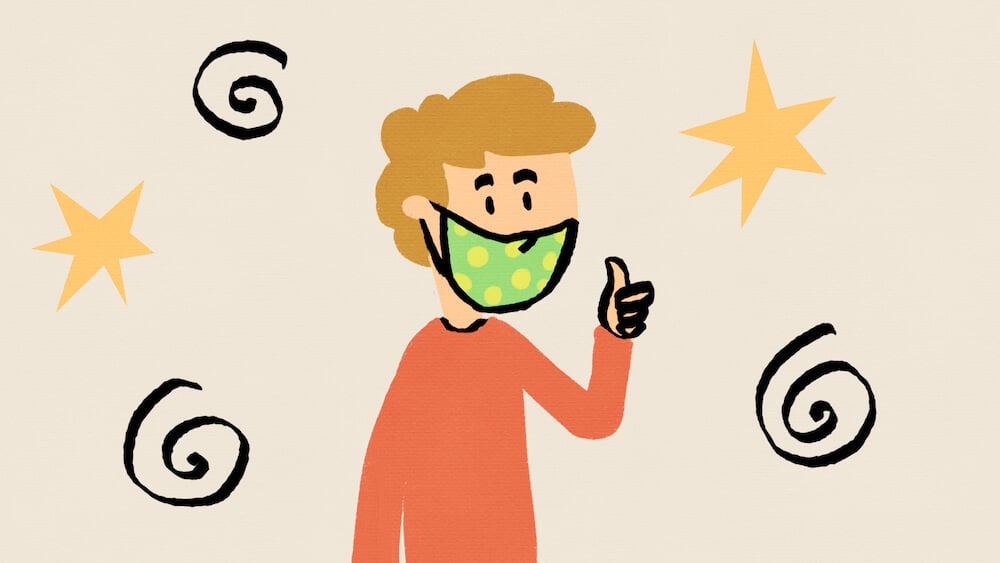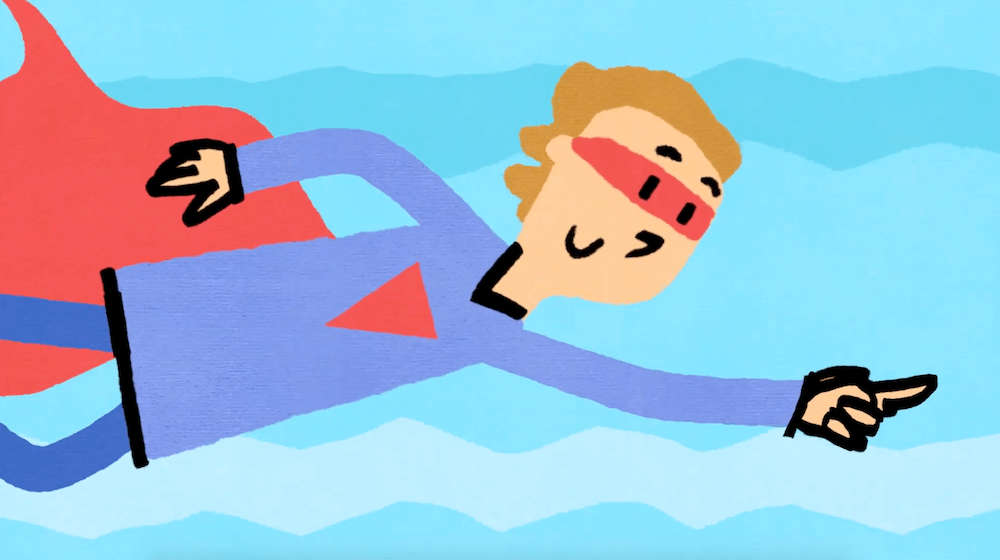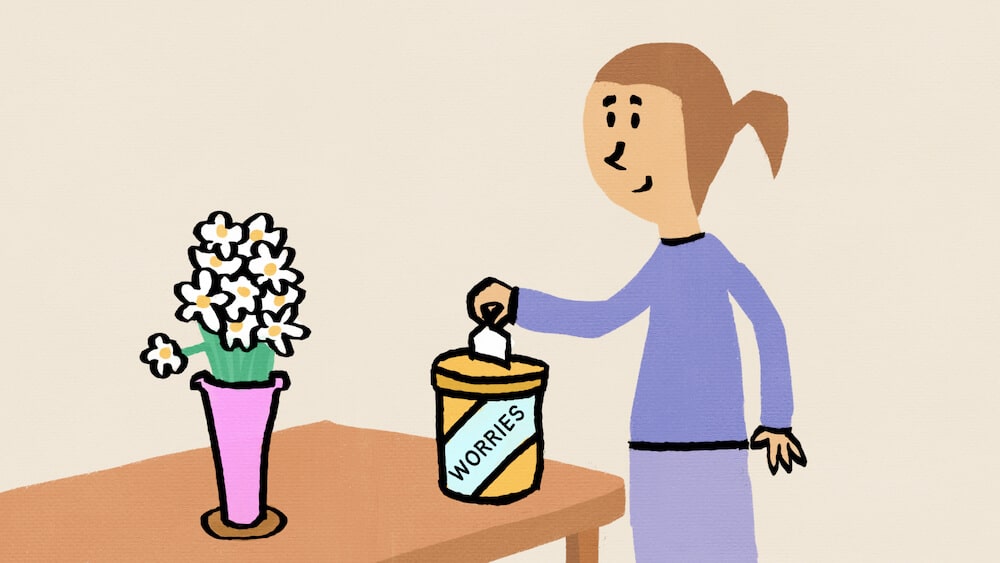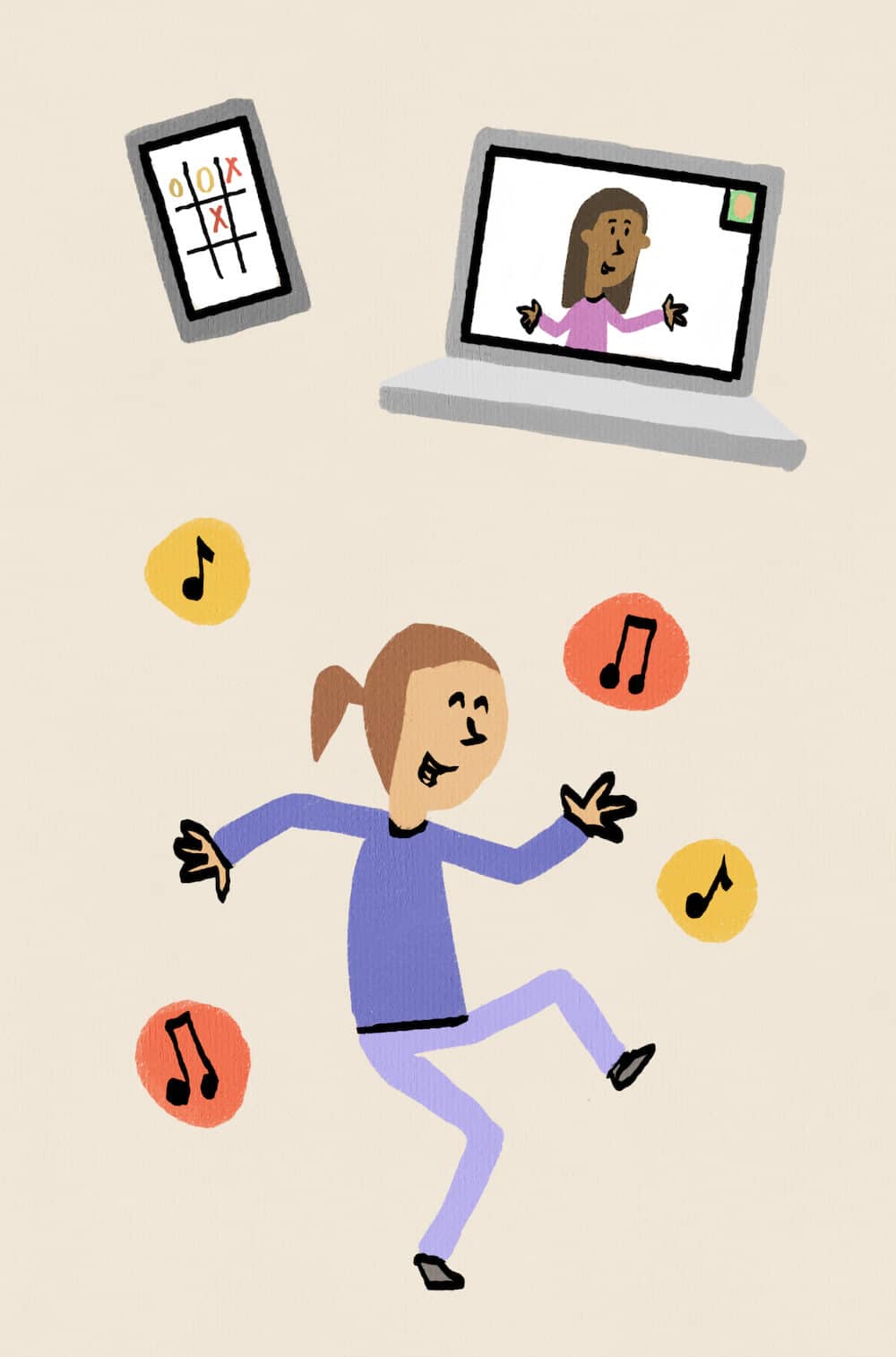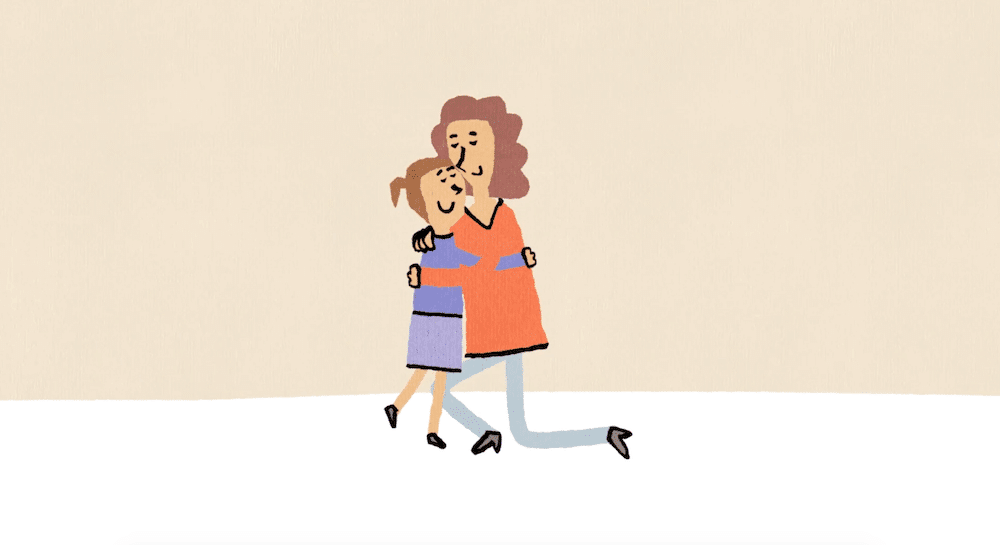
Children’s Anxiety – Building Resilience
As we are beginning to ease out of lockdown, our charity is experiencing first hand the ongoing effects the pandemic has had on childhood mental health. We all experience anxiety at some point in our lives; this includes childhood. To support parents in better understanding and to combat children’s anxieties surrounding coronavirus (COVID-19), we have created this resource. Our thanks to Erin May, MSc Children’s Therapist for partnering with us on this project.
This phrase is especially true in their early years. Young children absorb both spoken and sensory information to make sense of the world around them. There’s a lot of uncertainty in the world right now. Of course, they would have absorbed the worries and anxieties surrounding the pandemic. Now, it will be the excitement and uncertainties of transitioning out of lockdown. This is normal. It is important to remember that you, as a parent, are not to blame.
In many ways, it is to be expected that children of all ages will be showing signs of anxiety during this period. Much the same as many adults will. The following explores some of these anxieties and practical solutions to support your child.
Common fears for young children particularly include a fear of animals, monsters/imaginary creatures, death and injury, strangers, being left alone and loss of a parent. It is unfortunate that aspects of the coronavirus could link into these fears.
Fear can often arise when we feel we cannot control the world around us. By allowing your child to work with you to address their fears and anxieties, you will be helping them safely build resilience and autonomy.
Nurturing Resilience
Resilience is the way we respond to and recover from difficult experiences. Having resilience allows us to cope. However, we do not learn resilience on our own. It has been shown that children need support to learn this skill over time and through practice.
Support and reassurance will certainly help children adjust to the ‘new normal’. By working together with our children, we can nurture their resilience as well as our own:
- Allow children to push their boundaries by taking healthy risks, within limits appropriate to their age, e.g. learning a new skill
- Empower children to fix their problems and ask for support when they experience difficulty. Show them that you believe that they can cope
- Embrace them making mistakes and show them how your mistakes have helped you learn. Lead by example
- Support children in understanding and regulating their emotions. While respecting where they are emotionally and not rushing them, we can teach them that emotions pass and are temporary. Identify and help label emotions, showing them how to manage it
- Show them how to reframe negative thoughts into positive thoughts
- Encourage creativity through play as this builds problem-solving skills which in turn helps increase resilience
- Encourage exercise as the neurochemicals released help the brain to be more resilient to stress
- Show our children, unconditional love.
Anxieties in the Home
It’s often easiest to spot the signs of anxiety when spending time with your child in the home. For example, an anxious child may be more energetic than usual, fidgety and have difficulties sitting still. Or oppositely they may have lower energy, seem tired and zoning out. Bedwetting, being irritable or tearful and a loss of appetite can also be signs that something isn’t right. All of these can show us that the child’s brain is on high alert, and they are struggling to regulate, and self soothe. The following are some strategies to help your child alleviate their anxieties.
Regulate
Help the child to regulate and connect with their bodies to ground themselves. Be mindful of what your child’s energy levels might suggest they need. Some children with high energy levels need to let their energy out, whilst others may need support to help soothe and calm. Children with low energy levels tend to need support to raise them. See the ‘sensory break’ ideas below.
Routine
Having a routine and structure to the day is beneficial for all children, especially those that are anxious. A visual timetable on the wall can help with this. You could also incorporate ‘sensory breaks’ within their routine. This will help them to remain regulated and mean you are not just supporting them when they are dysregulated.
Sensory Breaks
These are activities to help children raise or lower their energy levels and break from their anxieties:
- Creating sensation through temperature, e.g. have a warm/cold drink, hot water bottle or cool pack
- Taste & texture sensations, e.g. lollies, crisps, veg sticks, drinking through a straw or chewbuddys (these can be purchased online, e.g. sensory direct)
- Physical sensations such as massage gloves, fidget toys or creating tension in the muscles and then releasing. For example, pushing against a wall, pulling something, e.g. along the floor, carrying something weighted or even a wheelbarrow race
- Drawing and colouring
- Blowing bubbles
- Listening to music
- Making a den with blankets/cushions and cuddle up to watch a film
- Any form of exercise or moving the body, e.g. rolling, bouncing or rocking on a gym ball.
Anxieties Outside the Home Environment
The majority of anxieties surrounding coronavirus will stem from outside the home. Children will probably have picked up not just on what we have said but also our emotions, changes of behaviour and routine involving outside the house.
Even with the easing of lockdown, children are restricted with activities they may have been used to doing. The outside world can overload their senses, particularly when we have not been exposed to it for a long period of time.
Ultimately, we want to help our children adjust to once again spending more time outside the home and get used to the new restrictions. Remember not to force your child as this could make their anxiety and fear worse. Be patient and expect there to be days that you feel as though you have gone backwards. The following are some strategies to help your child with their anxieties.
Identifying Fears
Work out what aspects are particularly triggering for your child. Are there any sounds, smells, locations that they seem to struggle with more? What could be the reasons for this; disinfectant smells, screens around tills, people wearing masks?
Explain and Emphasise
Emphasise the positives in the changes and explain that they are there to help us, not to scare us. Help your child to reframe the negative thoughts they are having into positive ones.
Dealing With Noise
For noise, you could try using ear defenders or an earphone with music in one ear (ensure they are able to tune in to you and keep safe). Play noises at home on a quiet volume via the internet (e.g. youtube) at a level they can tolerate that they may hear outside such as people talking or cars. Allow the child to be in control of this volume and do not pressurise them if they are uncomfortable.
Mindfulness & Sensory
- Find pictures or objects together in the house that remind you of happy times outside. Explore feelings and thoughts together. Were there any nice sensory memories from this time? E.g. the taste of ice cream, feeling of sitting on the grass or playing in the sand?
- Work on mindful breathing activities together at home to then take outside with you
- Have sensory and calming toys with you when you leave the house
- Ensure the child has a drink with a straw in and maybe a snack for the journey.
Fun, Fun, Fun
Is there a fun activity your child can choose for you to do outside? E.g. a scavenger hunt, picnic or a bug hunt.
Imagination
Is there a new toy or object in the home that hasn’t been outside the house before? Could the child give the toy a tour of a place near your home that is special to them?
Slowly but Steadily
Be patient and build up your child’s time outside the house slowly. Sit in the garden if you have one and tune into your senses together – what can you hear, see, smell, feel? If you don’t have one, stand on your front doorstep or by an open window and do the same. Then take a walk to the end of the road and back. Your child can even help by creating a map of your journey or writing directions for you to follow. Alternatively set times, e.g. 5 minutes a day and increase to 10 minutes a day.
Social Anxieties Outside the Home
It is understandable for children to have anxieties around social interactions since the pandemic began. With lockdown and social distancing, a primary response to coronavirus is that they may perceive others as unsafe. This could be unconscious. Children could also have a real fear of their loved ones becoming ill and dying. As children have not interacted with their friends or wider family as much as before, they may also become shy. The following are some strategies to help your child with their social anxieties.
Making Sense of Guidelines
Reinforce that it is okay to be outside and it is not ‘breaking the rules’. Look at the things you can do as well as the things you can’t do. Give examples by making up social stories. Emphasise kindness to both themselves and others. Blaming others isn’t helpful and can create more fear.
As much as possible only allow your child to hear age-appropriate facts. For a guide on answering children’s questions on coronavirus, visit the children’s commissioner website.
Control
Make a list together of the things you can control and things you can’t control. This can help your child feel more in control of what they can do about the virus. For example, ‘I can’t control other people walking close to me, but I can control where I choose to walk.’ Try writing a gratitude journal together. As a family highlight all of the positive things that have happened that day or things you are grateful for. If your child is going to be wearing a mask, have a look at colourful masks made for children or even make your own together. By giving them some control, it can help ease some of the anxiety.
Strengths-based Activities
Some social anxiety can come from fears of not knowing what to say/feeling stupid/not wanting to do the wrong thing and be rejected. This can often stem from low self-esteem. Strengths-based activities can be excellent for this, such as:
- Ask them to make a collage all about themselves
- Explore and write down together what makes them unique and important. For worksheets visit: https://www.therapistaid.com/therapy-worksheets/self-esteem/none
- Explore and write down together what strengths and qualities they have.
Worry Jars
Explore the worries together. Have a worry jar, worry box or worry monster to give your child a place to write their fears and then talk about them together.
Stories
Draw your child’s worries together and make them into a story to play together. Can the child change the story or the outcome? What is the solution to the worry?
There are some great storybooks about worries that you could read together, such as ‘The Huge Bag of Worries‘.
Missing People / Self Isolating
Is there a family member or friend that your child is particularly missing? Perhaps you have a family member who is self-isolating.
- Ask them to send a t-shirt for your child to put on a teddy and cuddle? (Remember to follow guidelines and wash items first before using)
- Plan fun social activities your child would like to do together and put them in a jar to use at a later date. This could be done over video/phone with another family member or friend to plan together
- Books about missing loved ones you cant be with include the ‘The Invisible String‘
- Structured online socialising via video with family or friends. Ensure the child feels safe and comfortable first and has experienced some practice calls with you. Can the video calls take place in a den they have made or with their favourite drink and snack? Keep the video short and structured at first with activities or games –
- Simon says
- Read a story together
- Show and tell special items in the home
- Scavenger hunt
- Find me something that starts with…
- Rock paper scissors
- Guess the animal/who am I games
- Musical statues
- Pictionary
- Charades
- Singing/dancing/making music/movement
- If you can screen share, games such as noughts and crosses can work.
Slowly but Steadily
Start short with social interactions. For example, a walk or bike ride past a friends house and wave or say hello outside. Your child may have something they want to show the friend to take with them. Increase the time slowly and go at your child’s pace.
Our thanks to Erin May. MSc Children’s Therapist. Find her book on ‘How to become a trauma friendly classroom’ on her website.
Home-Start Central Bedfordshire, Delta House, 33 Hockliffe Street, Leighton Buzzard. LU7 1EZ, England. A charitable company limited by guarantee. Registered in England and Wales, registered charity no. 1109262. Company Reg No. 05414484.
Email: office@home-startcentralbeds.org.uk | Tel: 01582 660061
